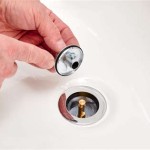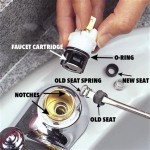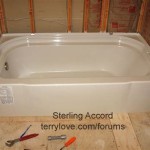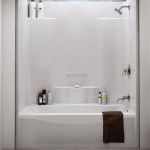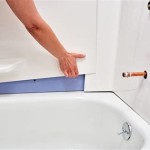Oversized Bathtub Overflow Cover Plates: Function, Necessity, and Considerations
The bathtub overflow cover plate, often overlooked, plays a vital role in the functionality and safety of a bathtub. Primarily, it prevents water from overflowing onto the bathroom floor, potentially causing water damage and mold growth. While standard sizes are common, oversized bathtub overflow cover plates offer specific advantages and address unique installation requirements. This article will delve into the purpose, necessity, selection criteria, installation processes, and aesthetic considerations of oversized bathtub overflow cover plates.
The primary function of an overflow cover plate is to direct excess water into the drain pipe when the water level in the bathtub reaches a certain point. The cover plate typically features a series of openings or a single large opening that allows water to flow into the overflow pipe, which is connected to the drain system. Without a properly functioning overflow cover plate, overfilling the bathtub would lead to water spillage and potential damage to flooring, walls, and even the structure below.
Beyond preventing water damage, the overflow cover plate also serves as a cover for the overflow pipe, generally improving the bathroom's aesthetics and preventing accidental insertion of objects into the plumbing system. In some jurisdictions, overflow covers are mandated by building codes to ensure safety and prevent potential water damage liabilities. The design and functionality of these plates have evolved, with oversized options offering both practical and style-related benefits.
Understanding the Need for Oversized Overflow Cover Plates
The necessity of an oversized bathtub overflow cover plate often arises from specific scenarios encountered during bathroom renovations, remodeling, or plumbing repairs. These situations necessitate a larger cover plate to effectively conceal imperfections, accommodate mismatched drainpipe placements, or achieve desired aesthetic effects.
One of the most common reasons for choosing an oversized cover plate is to hide existing damage around the overflow drain opening. Over time, the area surrounding the overflow drain can become chipped, cracked, or discolored due to water exposure, cleaning products, or accidental impacts. An oversized cover plate can effectively mask these imperfections, offering a quick and cost-effective solution to improve the bathroom's appearance without undertaking extensive repairs. Instead of replacing the entire bathtub or attempting to patch the damaged area, homeowners can simply install an oversized cover plate to achieve a cleaner and more polished look.
Another frequent scenario involves the replacement of an existing overflow cover plate with one that doesn't perfectly match the original size or shape. This can occur due to variations in manufacturing standards, discontinued product lines, or simply the unavailability of the exact replacement part. In such cases, an oversized cover plate can provide a wider margin of coverage, ensuring that the new plate completely covers the footprint of the old one and avoids exposing any unsightly gaps or unfinished surfaces. This is particularly relevant when dealing with older bathtubs where finding exact replacement parts can be challenging.
Furthermore, oversized cover plates can be used to accommodate slight misalignments between the overflow drainpipe and the surrounding wall or bathtub surface. This misalignment can result from imprecise plumbing installations or structural settling over time. By using a larger cover plate, one can effectively conceal these misalignments and create a more seamless and professional-looking installation. The extended coverage provided by an oversized plate can compensate for minor imperfections and ensure a secure and aesthetically pleasing fit.
Key Considerations When Selecting an Oversized Overflow Cover Plate
Selecting the appropriate oversized overflow cover plate requires careful consideration of several factors, including size, material, finish, and compatibility with the existing drain system. Failure to account for these factors can result in an improper fit, diminished performance, or aesthetic inconsistencies.
The most crucial aspect is determining the correct size of the oversized cover plate. This involves measuring the diameter of the existing opening around the overflow drain and selecting a cover plate that is large enough to completely conceal any damage, imperfections, or misalignments. It is generally advisable to choose a cover plate that extends at least half an inch beyond the edges of the existing opening to ensure adequate coverage. Accurate measurements are essential to avoid selecting a cover plate that is too small or excessively large, which could detract from the overall appearance of the bathroom.
The material of the overflow cover plate is another important consideration. Common materials include brass, stainless steel, and plastic. Brass and stainless steel are durable and resistant to corrosion, making them suitable for use in wet environments. Plastic cover plates are typically more affordable but may not be as durable or aesthetically pleasing as metal options. The choice of material should be based on a balance of cost, durability, and aesthetic preferences.
The finish of the overflow cover plate should complement the other fixtures and hardware in the bathroom. Common finishes include polished chrome, brushed nickel, oil-rubbed bronze, and matte black. Selecting a finish that matches or complements the existing faucets, showerheads, and other accessories can create a cohesive and visually appealing design. It is important to consider the overall style of the bathroom when choosing a finish, as certain finishes may be more appropriate for traditional or contemporary designs.
Compatibility with the existing drain system is also a critical factor to consider. Different bathtub overflow systems may require specific types of cover plates with matching screw holes or mounting mechanisms. Before purchasing an oversized cover plate, it is essential to verify that it is compatible with the existing drain system to ensure a secure and leak-free installation. Consulting with a plumbing professional can help determine the appropriate type of cover plate for a particular bathtub overflow system.
Installation and Aesthetic Integration
The installation of an oversized bathtub overflow cover plate is typically a straightforward process that can be completed by homeowners with basic plumbing skills. However, proper installation is essential to ensure a secure fit and prevent leaks.
Prior to installation, it is important to clean the area around the overflow drain opening to remove any dirt, grime, or old sealant. This will ensure a clean surface for the new cover plate to adhere to. If there are any loose or damaged pieces of the existing overflow drain assembly, they should be repaired or replaced before installing the new cover plate.
The oversized cover plate typically attaches to the overflow drainpipe using screws. The screws may be provided with the cover plate, or they may need to be purchased separately. It is important to use screws of the appropriate length and diameter to avoid damaging the drainpipe or the surrounding bathtub surface. The screws should be tightened securely, but not overtightened, to avoid cracking the cover plate or stripping the screw holes.
In some cases, additional sealant may be required to create a watertight seal between the cover plate and the bathtub surface. A thin bead of silicone caulk or plumber's putty can be applied to the back of the cover plate before it is installed. This will help to prevent water from seeping behind the cover plate and causing water damage. The sealant should be applied evenly and allowed to dry completely before using the bathtub.
Aesthetically, the oversized overflow cover plate should seamlessly integrate with the overall design of the bathroom. The choice of material, finish, and shape should complement the other fixtures and accessories in the room. For example, a polished chrome cover plate may be suitable for a modern bathroom with chrome faucets and showerheads, while an oil-rubbed bronze cover plate may be more appropriate for a traditional bathroom with bronze fixtures. The size and shape of the cover plate should also be proportional to the size of the bathtub and the surrounding wall. Careful consideration of these aesthetic factors can help to create a cohesive and visually appealing bathroom design.

Bluevue Overflow Gasket Kit With Cover Stop Tub Leaks Chrome

Pf Waterworks Tub Magic Less Snap On Overflow Face Plate

Westbrass Universal 2 Hole Overflow Faceplate In Stainless Steel D329 20 The Home Depot

Watco Innovator Snap On Bathtub Overflow Plate Kit In Chrome Plated 18009 Cp The Home Depot

Watco 18002 Cp Chrome Plated Two Hole Overflow Plate Kit

Pts061op H S Building Supplies

Keeney Chrome Triplever Bathtub Face Plate With S K826 1pc

Delta U2693 Pk Chrome Overflow Plate 2 Hole Tub Drain

Danco 12078 Bathtub Overflow Drain Cover Clear
Ace Chrome Trip Lever Face Plate Mfr Ace826 1 Hardware
Related Posts



